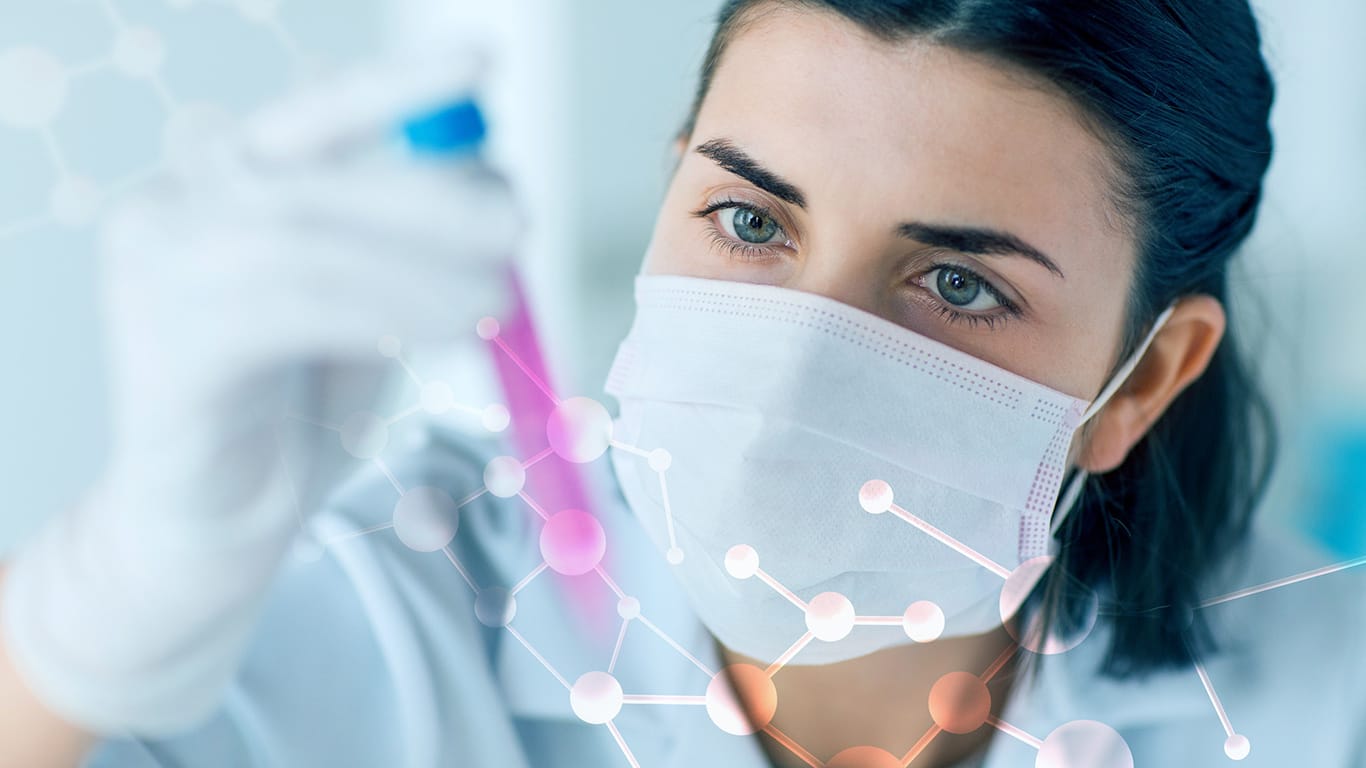Preclinical research is the start of new treatments and medicines. It helps scientists test ideas before human trials. New trends are making this phase faster and more accurate.
If you’re involved in science or healthcare, you should know what’s new. These updates could change how we fight diseases. They also make medicine safer and more effective. Keep reading to explore the latest trends.
Advanced Cell Culture Systems
Cell cultures are getting better. Researchers now grow cells in 3D environments. This helps mimic the human body more closely. The goal is to see real-life reactions before testing in animals. It saves time and gives more data.
It also helps reduce animal use. Scientists can now grow organ-like cell models. These are called organoids. They show how diseases grow and react. This method also helps test treatments early. Results can be seen faster than before.
Growing cells in three dimensions allows for better communication between cells. This better replicates how cells behave inside the body. Scientists can test how drugs affect tissue structures, not just isolated cells.
This method improves the prediction of how medicines work. More labs are shifting to 3D cultures for better research outcomes.
Microfluidic Technology
Tiny devices now control liquids at small scales. These tools help create lab-on-a-chip systems. Scientists can test many samples at once. This saves time and money. It also uses fewer materials.
These devices can track cell changes. They offer real-time updates. It’s easier to see how drugs act on cells. Results are quick and clear. This method is used more often in early testing.
Microfluidic systems allow precise control over the environment around cells. This helps mimic blood flow and nutrient delivery.
Such control leads to more accurate drug testing. The small size reduces waste and speeds up experiments. These technologies are becoming standard in modern labs.
Artificial Intelligence Integration
AI tools are being used in preclinical research. They help find patterns in large data sets. Machines can now predict drug behavior. This helps avoid bad reactions. It also picks better test subjects.
AI cuts down human error. The work is faster with these tools. They also help plan better trials. AI supports drug safety checks. More teams are using AI each year.
Artificial intelligence can analyze complex biological data faster than humans. It helps identify potential drug targets and side effects early.
By automating routine tasks, researchers can focus on critical decisions. AI algorithms improve as they learn from new data. This leads to smarter, safer drug development.
Genomic Editing Techniques
Editing genes is now easier. CRISPR is often used. It changes DNA with precision. This helps study disease models better. Scientists can copy genetic diseases in animals.
This shows how they affect the body. It also tests gene-based drugs. More labs are trying this method. The results can be fast. It leads to better understanding of genetic problems.
Genomic editing allows for the creation of customized disease models. These models replicate human genetic disorders closely.
This helps researchers study disease progression and treatment response. It also opens doors to gene therapies. The technology continues to improve in accuracy and safety.
High-Throughput Screening
This method tests many samples quickly. Machines help scan hundreds of tests. It’s faster than manual methods. It helps find which compounds work best.
The process is automated. This reduces mistakes. It saves a lot of time. More drugs can be tested in less time. It is used early in the research process. It also helps pick the most promising leads.
High-throughput screening can process thousands of compounds daily. This rapid pace accelerates the discovery phase. Robots perform repetitive tasks with high precision.
Early detection of ineffective compounds saves time and resources. It allows scientists to focus on the most promising candidates.
In Silico Modeling
Computers are used to model body systems. These models show how drugs might behave. It can simulate human organs. Researchers test drug safety this way. It cuts down the need for live tests.
The results come in minutes. The models are always improving. They learn from past data. This trend is growing. It offers early risk signs before trials.
In silico modeling uses software to predict drug interactions. It helps reduce the number of animal experiments.
These models can test multiple drug scenarios quickly. They improve safety predictions before clinical trials. Researchers use this data to refine drug designs.
Advanced Imaging Technologies
New tools now show cell-level details. Imaging helps track drug effects in real time. It also shows disease progress. Some systems can even view deep inside tissues.
These tools reduce the need to sacrifice test animals. They give more reliable data. Pictures help make fast decisions. They can even be shared for team reviews. It improves team collaboration. Imaging is now a key part of early research.
Techniques like fluorescence and live-cell imaging enhance visualization. Researchers can watch cells respond to treatment in real time. These tools provide more detailed insights than traditional methods.
Non-invasive imaging reduces harm to animals. They help scientists better understand drug mechanisms.
Data Management Platforms
Research makes a lot of data. Tools now store and sort this data. They make it easier to understand results. Teams can now share data easily. Errors are easier to spot. These systems back up everything. They also create reports. It helps with tracking progress.
Clear data supports better decisions. Most labs now use these platforms.
Data platforms centralize research information. This allows easy access for team members. It also helps maintain quality and compliance. Data is more secure and organized. This improves transparency and productivity.
Non-Animal Alternatives
Many new methods don’t use animals. This trend is growing. It answers ethical concerns. These tools use human cells instead. Some use digital models.
Others use tissues grown in labs. These give safer results. Regulators support these changes. Funding now goes to non-animal testing. The goal is to replace animals in labs.
Using alternatives to animal testing respects animal welfare. It also provides data more relevant to humans. Advances in cell culture and computational models support this. The approach speeds up research and approval. It is becoming the preferred choice worldwide.
Automation in Lab Processes
Machines now run tests. They mix chemicals and track reactions. This saves human effort. It also works all day and night. Fewer errors happen with machines. They make tests faster. The setup is now common in labs. Costs go down over time. Staff can focus on analysis. Automation helps meet deadlines.
Automated systems improve lab efficiency. They handle repetitive and precise tasks. This reduces human fatigue and errors. Automation supports large-scale studies. It allows researchers to concentrate on interpretation.
Expanded Use of Big Data
Research collects large sets of data. Big data tools help sort and read it. They show trends and patterns. This guides drug development. These tools also compare results.
It helps refine early ideas. Researchers can learn from past trials. It’s now easier to predict outcomes. Big data is used in planning new projects. More fields are using these insights.
Big data analytics reveal hidden connections in research. It supports decision-making with evidence. These insights improve trial designs. Data sharing accelerates scientific progress. Big data is a powerful tool for innovation.
Ethical AI Protocols
As AI use grows, rules are needed. Ethical AI follows fairness rules. It avoids bias in data. This is key in research. Wrong data can cause wrong results.
Ethical AI checks for issues. It also explains how it works. This builds trust. More groups are using these rules. It’s now part of preclinical planning.
Ethical guidelines ensure AI is used responsibly. They protect patient data privacy. They also ensure AI decisions are transparent. This encourages acceptance by regulators. Ethics support safe and fair AI adoption.
Cross-Disciplinary Teams
More teams now include many fields. They combine biology, chemistry, and tech. This helps solve complex problems. It makes research stronger. Each team member offers something new.
Ideas come from many angles. This leads to faster progress. Teams share data and insights. It breaks down silos in science. More labs now use this model.
Bringing together experts improves creativity and solutions. Different perspectives enrich research. Collaboration fosters learning and innovation. It leads to well-rounded results. Such teamwork is essential for complex studies.
Nanotechnology Applications
Tiny particles are now used in testing. They help target cells. Drugs can be wrapped in them. This shows how cells respond. It also helps in imaging.
The results are more detailed. Tiny tools enter cells better. They help deliver drugs too. This trend is growing. It supports better drug design.
Nanoparticles improve drug delivery accuracy. They reduce side effects by targeting only diseased cells. Nanotech also enhances imaging contrast. It allows tracking of drug movement. This technology is transforming medicine.
Eco-Friendly Lab Practices
Labs now focus on the environment. They use less plastic. They recycle tools. Some use clean energy. Water is reused in tests. Waste is tracked closely. These changes lower costs. They also meet new rules. Green labs are now the goal. More labs are joining this shift.
Sustainable labs help reduce environmental impact. This includes energy-efficient equipment and waste reduction. Green practices also improve lab safety. Environmental responsibility is valued by funding agencies. It supports a healthier planet.
Standardized Protocol Libraries
Labs use set methods now. These protocols reduce errors. Tests are easier to repeat. Results are more trusted. It helps share findings. Some labs build shared libraries. This saves setup time. It also helps train staff. These standards are now required. They improve research quality.
Standard protocols create consistency across labs. They allow reproducibility of results. This builds confidence in findings. Training is easier with clear procedures. Protocol libraries speed up new studies.
Virtual Reality Simulations
VR helps scientists train. It shows drug effects in 3D. Simulations are used for planning. They reduce human error. Teams learn faster. Mistakes cost less. It is safe and easy to use. VR helps with cell studies too. More labs are adding this tech. It offers better understanding.
Virtual reality creates immersive learning environments. It enhances understanding of complex biological processes. VR can simulate lab procedures safely. It prepares teams for real experiments. The technology continues to improve.
Humanized Animal Models
Animals are now modified with human genes. This helps them show human reactions. One common method is patient-derived xenograft (PDX) models. These involve transplanting human tissue into mice. It helps study cancer treatments.
These models mimic real human conditions. Results are more useful. It’s a step toward better drug design. Labs are using them more often.
Humanized models improve the relevance of animal testing. They respond more like human patients would. This aids in studying drug effects and disease progression. These models reduce trial failures. They are critical in cancer and immunology research.
Cloud-Based Collaboration
Cloud tools now support lab work. Teams can work from different places. Files are shared instantly. It helps global research groups. Mistakes are easier to fix. Work is backed up safely. These tools also support remote trials. Updates happen in real time. Labs save time and cost. Cloud tools are now standard.
Cloud computing allows remote access to data and software. It supports international collaborations easily. This speeds up communication and problem solving. Security measures protect sensitive data. Cloud tools make research flexible and scalable.
Immune System Modeling
New models now mimic the immune system. This helps test how drugs affect it. It’s useful for vaccines too. These models are more accurate now. They show side effects early. It’s safer than guessing. They also help with immune-based treatments. These models guide drug design. They are key for today’s diseases. Labs use them more each year.
Immune system models simulate complex immune responses. This helps predict reactions to drugs. It also supports development of immunotherapies. These models improve vaccine research. They are critical in modern drug discovery.
Discover Innovative Trends in Preclinical Research
Preclinical research is moving fast with these new trends. They make testing smarter, safer, and quicker. Scientists now have better tools and methods.
These changes reduce risks before human trials. It also helps bring better treatments to people sooner.
Labs that adapt to these trends lead the way. As research improves, patients benefit too. The future of medicine starts in the lab. Embracing innovation is key. Preclinical research has never been more exciting.
Keep going – there’s more to read.




